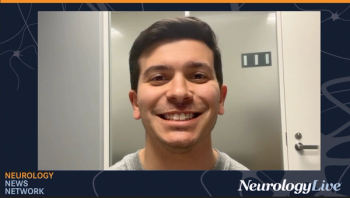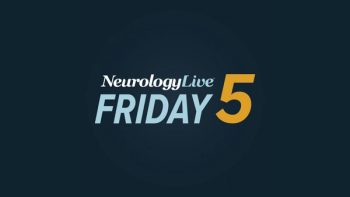
Investigating Therapeutic Potential of Gene Therapy AB-1005 in Moderate Parkinson Disease: The REGENERATE-PD Trial
Key Takeaways
- Gene therapy offers potential for modifying Parkinson's disease progression by targeting the underlying disease process, unlike traditional symptom-focused treatments.
- The REGENERATE-PD trial evaluates AB-1005, an AAV2 gene therapy, for safety and efficacy in moderate-stage Parkinson's patients, focusing on motor symptom control.
The REGENERATE-PD trial is a phase 2 study assessing the safety and efficacy of the investigational gene therapy AB-1005 in patients with moderate-stage Parkinson disease.
Parkinson disease (PD) is a progressive neurological condition marked by symptoms like slowed movement, tremors at rest, muscle stiffness, and balance issues. Although current treatments focus on symptom relief, they do not slow or stop disease progression. As a result, there is increasing interest in developing therapies that can modify the course of the disease and enhance quality of life. One promising area of research is gene therapy using adeno-associated viral (AAV) vectors to deliver therapeutic genes directly into the central nervous system.1
A systematic review of clinical trials assessing gene therapy approaches for PD suggested that these treatments may go beyond symptom management by addressing the underlying disease process.2 Compared with traditional treatments, gene therapy may offer more consistent dopamine replacement, symptom relief, and fewer adverse effects. Choosing advanced therapies like gene therapy may require careful consideration of individual patient needs, in addition to efficacy and safety. Despite the field continuing to evolve rapidly, a lack of direct comparison trials limits a clear understanding of which approaches are most effective and safest.
As interest in gene therapy continues to grow, new clinical trials are underway to explore its potential in modifying disease progression in PD. One such effort is the REGENERATE-PD clinical trial (NCT06285643), a phase 2, randomized, double-blind, sham surgery-controlled study evaluating the safety and efficacy of AB-1005, an agent developed by AskBio and Bayer. AB-1005 is an investigational adeno-associated viral vector serotype 2 (AAV2) gene therapy containing the human glial cell line-derived neurotrophic factor (GDNF) transgene.
"As a patient’s PD progresses, the benefits of currently available anti-PD medications become increasingly unpredictable and restrictive to their daily life. The aspiration of gene therapy for moderate-stage PD is to slow down disease progression and treat the damaged or dying dopaminergic neurons with the hope of durably restoring motor control," Adrian Kells, PhD, senior vice president, Integrated Product Team Lead, Parkinson's and MSA, AskBio, told NeurologyLive® in a recent interview.
Being conducted principal investigator
"Patient reported functional measures are important for the clinical evaluation of new PD therapeutics, and changes in Good ON time from the Hauser PD Motor Diary are one of the key assessments that regulators are requesting alongside well-established clinical rating scales," Kells said. "Evaluating the underlying impact on disease progression after a one-time irreversible treatment, such as a gene therapy, is a limitation for PD outcome measures. This is a challenge that we face as a field to identify more reliable methods to evaluate long-term functional outcomes in longitudinal studies where a patient’s standard of care treatment regimen is expected to change with PD progression. "
To ensure a well-defined study population, the REGENERATE-PD trial includes specific eligibility criteria. Eligible participants must be between 45 and 75 years old and have received a PD diagnosis within the past 4 to 10 years. Diagnosis must be confirmed by the presence of bradykinesia alongside at least one other hallmark symptom—rigidity, resting tremor, or postural instability. Eligible individuals must also exhibit motor fluctuations, as recorded in a Parkinson’s Disease Motor Diary, and maintain a stable regimen of anti-parkinsonian medications for a minimum of four weeks prior to screening. A demonstrated positive response to levodopa therapy is also required for enrollment.
Conversely, individuals with other medical, genetic, or neurological conditions that could account for their symptoms will be excluded. This includes patients with significant cardiovascular or vascular disease, major cognitive impairment, unmanaged mood disorders, or a history of psychosis or impulse control issues. The trial also excludes those with a history of cancer—except treated non-melanoma skin cancer—as well as individuals with conditions that could pose surgical risks, such as contraindications to MRI or gadolinium-based imaging. Prior brain surgeries, including deep brain stimulation, and current use of long-term immunosuppressive therapy are also grounds for exclusion.
"PD is highly heterogeneous, with each patient presenting with their own set of symptoms, disease history, and personal preferences for managing their healthcare situation. This variability of symptoms and treatments brings considerable challenges for gene therapies where the primary objective is to have a long-term safe and durable beneficial impact on disease progression," Kells told NeurologyLive. "It is important that candidates selected for a gene therapy have a good understanding of their PD symptoms, their medical management, and are fully informed of the multi-year commitment that participating in a PD gene therapy study involves. Having a stable care partner or support person who can assist with trial-related activities is also advantageous and can reduce the risk of missing critical data collection."
Presented at the
All told, neurosurgical delivery of AB-1005 resulted in putamen coverage of 63% (±2%), exceeding the goal of greater than 50% coverage. Bilateral infusions of the agent in the putamen (up to 1.8 mL) were well tolerated, with no serious adverse events (AEs) associated with the gene therapy or contrast agent.
This multi-site, parallel assignment, non-randomized trial primarily looked at safety and potential clinical effect of AB-1005, with other secondary outcomes that assessed motor and non-motor function, as well as brain dopaminergic network integrity through DaTSCAN. In the study, which follows patients for up to 5 years post administration, scheduled 6-month postoperative MRIs revealed findings of asymptomatic unilateral T1 hypointensity adjacent to 3 of the putaminal infusion trajectories.
In terms of safety, as of November 3, 2023, 57 nonserious AEs and 6 serious AEs had been reported, most of which were transient and were expected following the operation. The AEs included headache, tremor, dyskinesia, arthralgia, musculoskeletal chest pain, fatigue, COVID-19, and MRI abnormalities. Six serious AEs, reported in 3 patients (mild: n = 1; moderate: n = 2), were all assessed as unrelated to the study treatment. Between mild and moderate patients, those with milder disease had a lower Levodopa Equivalent Daily Dose (LEDD) at baseline and demonstrated further stability of LEDD over 18 months.
According to AskBio, the mild cohort of patients showed relative stability of PD symptoms, as assessed through the Movement Disorder Society-Unified Parkinson’s Disease Rating Scale (MDS-UPDRS)- Part 2, over the 18-month treatment period. Similar effects were seen on Part 3 of the scale, which assesses clinician-rated motor examination scores in ON and OFF medication states.
In the mild cohort, patient-reported PD Motor Diaries showed a –1.3-hour reduction in good ON time, a 0.2-hour increase in ON time with troublesome dyskinesia, and a 1.1-hour increase in OFF time. The company noted that 1 patient in this group decline to complete the diary after dosing, and that troublesome dyskinesia and increased OFF time in this cohort may have been because of a genetic defect of an unknown pathological significance. "These factors are believed to have contributed to worsening of ‘Good ON’ state time and ‘OFF’ state time over 18 months for the Mild Cohort," the company wrote.
For the moderate cohort, investigators observed improvements of –3.8 (SE, 3.5) points on MDS-UPDRS-II and improvements of –20.4 (SE, 4.5) points in MDS-UPDRS-III over the 18-month period. The moderate cohort also had a –10.6 (SE, 3.6) point improvement in ON medication state compared with baseline.
Using motor diaries, patients in the moderate group reported a 2.2-hour enhancement in good ON time, which was considered clinically meaningful; a 0.5-hour reduction in ON state with troublesome dyskinesia; and a 1.7-hour reduction in OFF state time. This equated to a 23.6% (±11.8%) increase in good ON state time and a 33.1% (±17.4%) decrease in OFF state time. Additionally, those with moderate PD demonstrated a mean LEDD reduction of 258 (±162) mg from baseline, with motor improvements that were observed in the setting of a reduced levodopa requirement.
REFERENCES
1. Grote J, Patel N, Bates C, Parmar MS. From lab bench to hope: a review of gene therapies in clinical trials for Parkinson's disease and challenges. Neurol Sci. 2024;45(10):4699-4710. doi:10.1007/s10072-024-07599-1
2. Saravanan CR, Eisa RFH, Gaviria E, et al. The efficacy and safety of gene therapy approaches in Parkinson's disease: A systematic review. Dis Mon. 2024;70(7):101754. doi:10.1016/j.disamonth.2024.101754
3. First participants randomized in AskBio Phase II gene therapy trial for Parkinson’s disease. News release. AskBio Inc. January 14, 2025. Accessed April 29, 2025. https://www.askbio.com/first-participants-randomized-in-askbio-phase-ii-gene-therapy-trial-for-parkinsons-disease/
4. AskBio presents 18-month phase 1b trial results of AB-1005 gene therapy for patients with Parkinson disease. News release. AskBio. April 16, 2024. Accessed April 29, 2025. https://www.globenewswire.com/news-release/2024/04/16/2863581/0/en/AskBio-presents-18-month-Phase-Ib-trial-results-of-AB-1005-gene-therapy-for-patients-with-Parkinson-s-disease.html
Newsletter
Keep your finger on the pulse of neurology—subscribe to NeurologyLive for expert interviews, new data, and breakthrough treatment updates.































